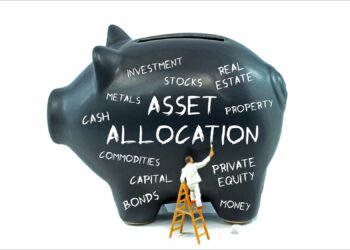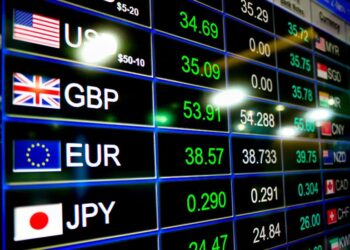The structural pressures at play on the global economy are acute and being mitigated by extreme policy measures – both on the monetary and fiscal side – which are providing temporary, albeit extended, support.
Markets are enjoying the support of policymakers who are collectively attempting to underwrite and encourage risk-seeking behaviour and this is driving a wedge between the inherent and deep-seated risks in markets and economies, and investor behaviour.
This moral hazard has the potential to unravel quickly, resulting in asymmetric risk to market returns, especially risk assets – credit and equities.
In a global environment of low interest rates, narrow credit spreads and demanding equity valuations, is a real return of 5% achievable without undue risk?
While the re-engagement of the Federal Reserve has been a big driver of recent returns, this is unlikely to continue at the same pace, or be as effective. Managing asset allocation will be paramount, as will be extracting alpha from a broad array of sources including interest rates, currencies, style biases (value versus growth) and active stock selection. While there are risks to both the upside and the downside, real 5% returns remain an achievable, but nonetheless challenging, objective over the next three years.
With a US recession looming within this timeframe, managing downside risk will be paramount. There are risks to both the upside and the downside over the coming three-year period and, on balance, they are likely skewed to the downside over this timeframe.
So, on the basis that 5% returns are achievable, how should investors start assessing opportunities for sourcing this level of return?
ALL EYES ON YIELD
In consideration of likely returns going forward, a good place to start is the underlying yield currently available on each asset. Yields are important as they are embedded within a return forecasting framework. From a bond perspective this is relatively clear; for equities, the earnings yield is a better proxy than the dividend yield given it reflects the effective return to the equity holder as opposed to simply the cash distribution. Accordingly, in a steady state and assuming no re-investment, this is effectively the return to investors from owning these assets.
If an investor were to seek 5% real return from this group of assets, significant capital appreciation is required to augment the shortfall between the yield and the target return.
This is possible in both equity and bond markets but how likely is hard to judge. Materially lower bond yields presumably require a weakening in growth as a catalyst which at some point would be damaging for earnings. In current markets where bad data is clearly good, it raises hopes of further central bank support, although there is inevitably an inflexion point.
As a pragmatic observer of market behaviour, it would also be foolish to dismiss the possibility of across-the-board price appreciation across these assets. 2019 to date is a good example where sovereign yields have lurched lower and equity markets higher.
STRUCTURAL DEMANDS
While the business cycle has evolved and faces significant challenges, the structural environment remains just as problematic, if not more so, than three years ago. Structural challenges to the global economy include:
- High and growing debt levels, particularly government debt, and high levels of household debt in Australia (127% gross domestic product (GDP) and 190% household income);
- Challenging demographics including ageing populations, rising dependency ratios and increasing health care costs;
- Rising income inequality and the associated rise of populism, which adversely impacts the ability of governments to undertake structural reforms as well as leading to increased social and political instability;
- Globalisation is giving way to increased protectionism and a reversal of the free trade agenda;
- Geopolitical power shift with the rise of China challenging the US’s global dominance, with the likelihood of ongoing and escalating tensions; and
- Climate change.
On the positive side of the structural ledger, however, areas such as technology and automation are boosting productivity, climate change is fast-tracking innovation around renewable energy, and emerging economies (particularly those in Asia) continue to grow and evolve.
As the balance of the positive and negative suggest, the structural environment has been a solid headwind for global growth, further exacerbated by implications such as low rates of inflation. This has allowed central banks to suppress interest rates and continue to enact quantitative easing programs to support asset prices, risk taking, activity and confidence.
While government debt levels have been high and rising for some time, governments have increasingly viewed budget deficits and rising debt as the lesser evil and have looked to increasingly support growth through fiscal stimulus. There is clearly a circularity to this latter point – global indebtedness has increasingly constrained central bankers and reduced the effectiveness of monetary policy as a demand management tool.
However, low interest rates have encouraged governments to borrow which has fuelled this vicious cycle and further crimped the effectiveness of monetary policy as a demand management tool. The net result has been an extended business cycle, but also a relatively muted and vulnerable one. The determination of central bankers and governments to avoid a cataclysmic end to this increasingly vulnerable and vicious cycle is without question.
US IN THE HOT SEAT
In this regard, there are two key vulnerabilities. One being the re-emergence of inflation, especially as the absence of inflation has provided central banks with the latitude to push the boundaries on monetary policy. Secondly, a recession in the key US economy (with broader implications for global growth) is now highly likely – this has been an area of increasing focus, particularly given the downward pressure on the business cycle due to US/China trade.
While forecasting recessions is well known to be a difficult exercise, there are some ways to assess the risks and the timing. The NY Fed Model currently suggests an elevated recession risk (reflecting the flattening of the US yield curve) while the Schroders model is less negative reflecting ongoing resilience in profit margins.
Markets, particularly the US, have re-rated on the basis of lower rates, but also supported by the resilience of profits. Our modelling on profits suggests both significant weakness ahead, and a significant mismatch between current profits/ bottom-up expectations and the outlook based on top-down factors.
The ‘best guess’ on timing for a US recession is within a one to two-year time horizon and is based on analysis which assesses the relationship between a range of real economy and financial indicators and recession risk. The longer lead indicators in this analysis are elevated, consistent with elevated recession risk on a one to two-year horizon.
Of course, the wildcard is US trade which has the potential to push the US, and by extension, the global economy, into recession if it worsens materially.
Conversely, this risk could reduce if a substantive resolution is reached. This is clearly a risk, albeit hard, if not impossible, to forecast. Outside of the US, Chinese growth has moderated, and stimulus has been tepid compared to past cyclical slowdowns. Europe remains problematic and the UK is clearly at risk of a poor Brexit outcome.
In Australia, after 28 years of continuous growth, the risks of recession have risen amid declining housing prices, digestion of new housing supply, a tightening in credit conditions, and exposure to moderating global trade. Lower rates, tax cuts and the potential for more monetary and fiscal stimulus should help moderate the slowdown and support growth based on domestic considerations, but the swing factor is global growth and a broader slowdown/recession in the US would be difficult for Australia to withstand.
Simon Doyle is head of fixed income and multi-asset at Schroders Australia.





